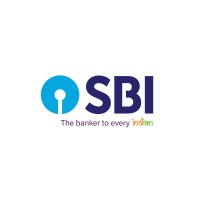Company Details
state-bank-of-india
119,767
3,755,123
52211
bank.sbi
0
STA_1163297
In-progress

State Bank of India Company CyberSecurity Posture
bank.sbiWe are the largest Indian Public Sector Banking & Financial Services Company. Headquartered in Mumbai, our national presence across the country with over 22,000 branches and globally across all time-zones at 227 locations in 30 countries, makes us the leader in the sector. Our legacy ranges back to the British era through the Imperial Bank of India, founded in 1806. Today, we are a conglomerate employing skilled professionals who are successfully taking the legacy forward through our specialized and customized financial services designed to cater the needs of Corporates, SMEs, NRIs & Retail customers. For more information about Career & Life at SBI, please visit : https://bank.sbi/web/careers Disclaimer: SBI shall bear no responsibility for confidentiality of information shared with SBI through LinkedIn.
Company Details
state-bank-of-india
119,767
3,755,123
52211
bank.sbi
0
STA_1163297
In-progress
Between 800 and 849

 SBI Global Score (TPRM)
SBI Global Score (TPRM)XXXX

Description: Several Indian banks have taken drastic steps in response to a security breach that may have compromised up to 3.25 million debit cards—or 0.5% of the approximately 700 million debit cards that Indian banks have issued. The financial institution is Hitachi Payment Services, a subsidiary of Hitachi Ltd. that oversees ATM network processing for Yes Bank Ltd., according to banking industry insiders. After that, the State Bank of India quickly disabled a few clients' debit cards, and it was currently replacing those cards to stop fraud. The top three private sector lenders, ICICI Bank, HDFC Bank, and Axis Bank, each stated in separate announcements that there may have been card account breaches following usage at non-bank ATMs. Additionally, certain consumers' debit cards are being reissued by Standard Chartered's Indian division.
Description: A significant security flaw identified in the YONO SBI banking application exposes millions of users to cybersecurity threats. The vulnerability, CVE-2025-45080, affects version 1.23.36 of the app, allowing unencrypted data transmission due to insecure network configuration settings. This enables man-in-the-middle attacks, putting banking credentials, transactions, and personal data at risk of theft, especially on public Wi-Fi networks.


State Bank of India has 12.36% more incidents than the average of same-industry companies with at least one recorded incident.
State Bank of India has 56.25% more incidents than the average of all companies with at least one recorded incident.
State Bank of India reported 1 incidents this year: 0 cyber attacks, 0 ransomware, 1 vulnerabilities, 0 data breaches, compared to industry peers with at least 1 incident.
SBI cyber incidents detection timeline including parent company and subsidiaries

We are the largest Indian Public Sector Banking & Financial Services Company. Headquartered in Mumbai, our national presence across the country with over 22,000 branches and globally across all time-zones at 227 locations in 30 countries, makes us the leader in the sector. Our legacy ranges back to the British era through the Imperial Bank of India, founded in 1806. Today, we are a conglomerate employing skilled professionals who are successfully taking the legacy forward through our specialized and customized financial services designed to cater the needs of Corporates, SMEs, NRIs & Retail customers. For more information about Career & Life at SBI, please visit : https://bank.sbi/web/careers Disclaimer: SBI shall bear no responsibility for confidentiality of information shared with SBI through LinkedIn.


Russian Standard Bank - leading private bank in the lending market. Bank sells credit programs in more than 1,200 locations across the country. Number of clients of the bank exceeded 23 millions, the total amount of consumer loans exceeded $30 billions. The number of trading partners of the Bank

BNP Paribas Personal Finance is 100% BNP Paribas group subsidiary and the European leader in personal finance. With a presence in 33 countries, our customers, partners and employees write our company’s story as they share our philosophy: promote access to a more responsible and sustainable consumpti

Rabobank is a cooperative bank with a mission. Our goal: to help customers realize their ambitions. We serve about 10 million customers in 47 countries. As an international financial institution, we work on the well-being and prosperity of millions of people. In the Netherlands, we serve individual

With a digitalization and people oriented vision, we contribute to our economy and society. We make great efforts to help you make the best financial decisions by offering you the opportunities of the future with our dynamic business model, pioneering technology and innovative products and services.

The dream started two decades ago by Mr. Sanjay Agarwal, a merit holder Chartered Accountant and a first generation entrepreneur, along with his proficient team. Together, the dexterous team embarked on a journey of excellence while enriching lives along the way. What started off as a dream to be
Founded in 1908 by Maharaja Sir Sayaji Rao Gaekwad III, Bank of Baroda is a top notch Public Sector Bank with a business of around Rs.10 trillion and network of 8100+ branches of which 105 overseas branches / offices are located in 17 countries excluding India spanning across Europe, US, Africa, As
Eu experimentei um novo jeito de me comunicar com você. Você usa o mundo digital para criar um universo totalmente seu e nesse novo universo eu acompanho você. Eu sei… Você é muito mais que digital. Eu olho para você e me vejo. Este é um dos motivos de eu estar aqui para conversar com você. Eu s
We are a universal bank with a 200-year history of supporting and growing the Nordic economies – enabling dreams and aspirations for a greater good. Every day, we work to support our customers’ financial development, delivering best-in-class omnichannel customer experiences and driving sustainable c

Welcome to Bank of India's official LinkedIn page! Join us & stay tuned to learn about our products, exciting offers & latest happenings. Bank of India was founded on 7th September, 1906 by a group of eminent business professionals from Mumbai. The Bank was under private ownership and control till J
.png)
Hackers infiltrated WhatsApp groups of political leaders and media teams in Hyderabad, pushing a fake SBI app via unauthorized access.
Our commitment to audit quality. At EY US, we are bringing our bold vision for the future of audit to life with quality at the center,...
The Reserve Bank of India has instructed all banks to migrate their websites to the secure '.bank.in' domain by October 31, 2025.
The digital landscape of Indian banking is undergoing a huge security-focused shift right now, as Reserve Bank of India's (RBI) directive...
State Bank of India (SBI) is expanding its workforce by hiring approximately 3500 officers. The bank has already recruited 505 Probationary...
The World Bank's Board of Executive Directors today approved a new program to improve the life expectancy and quality of life for 11 million...
Security researchers found the exposed Indian bank transfer records, and the data was eventually secured. Indian fintech company NuPay took...
The ETCISO Annual Conclave 2025 brought together India's top security leaders, practitioners, and futurists to chart the evolving role of...
From Centre Head to VPs, SBI Offers Big Pay Checks for Cybersecurity Specialists ... The State Bank of India (SBI) has opened applications for...

Explore insights on cybersecurity incidents, risk posture, and Rankiteo's assessments.
The official website of State Bank of India is https://bank.sbi.
According to Rankiteo, State Bank of India’s AI-generated cybersecurity score is 817, reflecting their Good security posture.
According to Rankiteo, State Bank of India currently holds 0 security badges, indicating that no recognized compliance certifications are currently verified for the organization.
According to Rankiteo, State Bank of India is not certified under SOC 2 Type 1.
According to Rankiteo, State Bank of India does not hold a SOC 2 Type 2 certification.
According to Rankiteo, State Bank of India is not listed as GDPR compliant.
According to Rankiteo, State Bank of India does not currently maintain PCI DSS compliance.
According to Rankiteo, State Bank of India is not compliant with HIPAA regulations.
According to Rankiteo,State Bank of India is not certified under ISO 27001, indicating the absence of a formally recognized information security management framework.
State Bank of India operates primarily in the Banking industry.
State Bank of India employs approximately 119,767 people worldwide.
State Bank of India presently has no subsidiaries across any sectors.
State Bank of India’s official LinkedIn profile has approximately 3,755,123 followers.
State Bank of India is classified under the NAICS code 52211, which corresponds to Commercial Banking.
No, State Bank of India does not have a profile on Crunchbase.
Yes, State Bank of India maintains an official LinkedIn profile, which is actively utilized for branding and talent engagement, which can be accessed here: https://www.linkedin.com/company/state-bank-of-india.
As of November 27, 2025, Rankiteo reports that State Bank of India has experienced 2 cybersecurity incidents.
State Bank of India has an estimated 6,710 peer or competitor companies worldwide.
Incident Types: The types of cybersecurity incidents that have occurred include Breach and Vulnerability.
Detection and Response: The company detects and responds to cybersecurity incidents through an containment measures with disabling debit cards, reissuing debit cards, and communication strategy with advisory to customers to avoid using the app on unsecured networks until patched..
Title: Debit Card Breach Affecting Multiple Indian Banks
Description: Several Indian banks have taken drastic steps in response to a security breach that may have compromised up to 3.25 million debit cards, or 0.5% of the approximately 700 million debit cards that Indian banks have issued.
Type: Data Breach
Attack Vector: Compromised ATM Network
Vulnerability Exploited: ATM Network Processing
Motivation: Fraud
Title: CVE-2025-45080 in YONO SBI Banking App
Description: A significant security flaw identified in the YONO SBI banking application allows unencrypted data transmission, potentially exposing millions of users to cybersecurity threats. The vulnerability, designated as CVE-2025-45080, affects version 1.23.36 of the app and stems from insecure network configuration settings.
Type: Vulnerability
Attack Vector: Man-in-the-middle (MITM) attacks
Vulnerability Exploited: CVE-2025-45080
Motivation: Data theft, financial fraud
Common Attack Types: The most common types of attacks the company has faced is Breach.
Identification of Attack Vectors: The company identifies the attack vectors used in incidents through Non-bank ATMs and Insecure network configuration settings in AndroidManifest.xml.

Data Compromised: Debit Card Information
Systems Affected: ATM Networks
Operational Impact: Reissuance of Debit Cards

Data Compromised: Banking credentials, Financial transaction data, Personal information
Systems Affected: YONO SBI: Banking & Lifestyle app v1.23.36
Identity Theft Risk: High
Payment Information Risk: High
Commonly Compromised Data Types: The types of data most commonly compromised in incidents are Debit Card Information, Banking Credentials, Financial Transaction Data, Personal Information and .

Entity Name: Hitachi Payment Services
Entity Type: Financial Institution
Industry: Finance
Location: India
Customers Affected: 3.25 million

Entity Name: Yes Bank Ltd.
Entity Type: Bank
Industry: Finance
Location: India

Entity Name: State Bank of India
Entity Type: Bank
Industry: Finance
Location: India

Entity Name: ICICI Bank
Entity Type: Bank
Industry: Finance
Location: India

Entity Name: HDFC Bank
Entity Type: Bank
Industry: Finance
Location: India

Entity Name: Axis Bank
Entity Type: Bank
Industry: Finance
Location: India

Entity Name: Standard Chartered
Entity Type: Bank
Industry: Finance
Location: India

Entity Name: State Bank of India (SBI)
Entity Type: Financial Institution
Industry: Banking
Customers Affected: Millions of SBI users

Containment Measures: Disabling Debit Cards, Reissuing Debit Cards

Communication Strategy: Advisory to customers to avoid using the app on unsecured networks until patched

Type of Data Compromised: Debit Card Information
Number of Records Exposed: 3.25 million
Sensitivity of Data: High

Type of Data Compromised: Banking credentials, Financial transaction data, Personal information
Sensitivity of Data: High
Data Encryption: None
Personally Identifiable Information: Yes
Handling of PII Incidents: The company handles incidents involving personally identifiable information (PII) through by disabling debit cards and reissuing debit cards.

Lessons Learned: Prioritize security configuration reviews and implement comprehensive security testing procedures throughout the application development lifecycle.

Recommendations: Avoid using the application on unsecured networks until a security patch is released.
Key Lessons Learned: The key lessons learned from past incidents are Prioritize security configuration reviews and implement comprehensive security testing procedures throughout the application development lifecycle.
Implemented Recommendations: The company has implemented the following recommendations to improve cybersecurity: Avoid using the application on unsecured networks until a security patch is released..
Communication of Investigation Status: The company communicates the status of incident investigations to stakeholders through Advisory to customers to avoid using the app on unsecured networks until patched.

Customer Advisories: Advisory to customers to avoid using the app on unsecured networks until patched
Advisories Provided: The company provides the following advisories to stakeholders and customers following an incident: was Advisory to customers to avoid using the app on unsecured networks until patched.

Entry Point: Non-bank ATMs

Entry Point: Insecure network configuration settings in AndroidManifest.xml
High Value Targets: Banking Credentials, Financial Transaction Data, Personal Information,
Data Sold on Dark Web: Banking Credentials, Financial Transaction Data, Personal Information,

Root Causes: Compromised ATM Network Processing
Corrective Actions: Reissuance of Debit Cards

Root Causes: Insecure network configuration settings
Corrective Actions Taken: The company has taken the following corrective actions based on post-incident analysis: Reissuance of Debit Cards.
Most Significant Data Compromised: The most significant data compromised in an incident were Debit Card Information, Banking credentials, Financial transaction data, Personal information and .
Most Significant System Affected: The most significant system affected in an incident was YONO SBI: Banking & Lifestyle app v1.23.36.
Containment Measures in Most Recent Incident: The containment measures taken in the most recent incident were Disabling Debit Cards and Reissuing Debit Cards.
Most Sensitive Data Compromised: The most sensitive data compromised in a breach were Banking credentials, Financial transaction data, Debit Card Information and Personal information.
Number of Records Exposed in Most Significant Breach: The number of records exposed in the most significant breach was 3.2M.
Most Significant Lesson Learned: The most significant lesson learned from past incidents was Prioritize security configuration reviews and implement comprehensive security testing procedures throughout the application development lifecycle.
Most Significant Recommendation Implemented: The most significant recommendation implemented to improve cybersecurity was Avoid using the application on unsecured networks until a security patch is released..
Most Recent Customer Advisory: The most recent customer advisory issued was an Advisory to customers to avoid using the app on unsecured networks until patched.
Most Recent Entry Point: The most recent entry point used by an initial access broker were an Insecure network configuration settings in AndroidManifest.xml and Non-bank ATMs.
Most Significant Root Cause: The most significant root cause identified in post-incident analysis was Compromised ATM Network Processing, Insecure network configuration settings.
Most Significant Corrective Action: The most significant corrective action taken based on post-incident analysis was Reissuance of Debit Cards.
.png)
Angular is a development platform for building mobile and desktop web applications using TypeScript/JavaScript and other languages. Prior to versions 19.2.16, 20.3.14, and 21.0.1, there is a XSRF token leakage via protocol-relative URLs in angular HTTP clients. The vulnerability is a Credential Leak by App Logic that leads to the unauthorized disclosure of the Cross-Site Request Forgery (XSRF) token to an attacker-controlled domain. Angular's HttpClient has a built-in XSRF protection mechanism that works by checking if a request URL starts with a protocol (http:// or https://) to determine if it is cross-origin. If the URL starts with protocol-relative URL (//), it is incorrectly treated as a same-origin request, and the XSRF token is automatically added to the X-XSRF-TOKEN header. This issue has been patched in versions 19.2.16, 20.3.14, and 21.0.1. A workaround for this issue involves avoiding using protocol-relative URLs (URLs starting with //) in HttpClient requests. All backend communication URLs should be hardcoded as relative paths (starting with a single /) or fully qualified, trusted absolute URLs.
Forge (also called `node-forge`) is a native implementation of Transport Layer Security in JavaScript. An Uncontrolled Recursion vulnerability in node-forge versions 1.3.1 and below enables remote, unauthenticated attackers to craft deep ASN.1 structures that trigger unbounded recursive parsing. This leads to a Denial-of-Service (DoS) via stack exhaustion when parsing untrusted DER inputs. This issue has been patched in version 1.3.2.
Forge (also called `node-forge`) is a native implementation of Transport Layer Security in JavaScript. An Integer Overflow vulnerability in node-forge versions 1.3.1 and below enables remote, unauthenticated attackers to craft ASN.1 structures containing OIDs with oversized arcs. These arcs may be decoded as smaller, trusted OIDs due to 32-bit bitwise truncation, enabling the bypass of downstream OID-based security decisions. This issue has been patched in version 1.3.2.
Suricata is a network IDS, IPS and NSM engine developed by the OISF (Open Information Security Foundation) and the Suricata community. Prior to versions 7.0.13 and 8.0.2, working with large buffers in Lua scripts can lead to a stack overflow. Users of Lua rules and output scripts may be affected when working with large buffers. This includes a rule passing a large buffer to a Lua script. This issue has been patched in versions 7.0.13 and 8.0.2. A workaround for this issue involves disabling Lua rules and output scripts, or making sure limits, such as stream.depth.reassembly and HTTP response body limits (response-body-limit), are set to less than half the stack size.
Suricata is a network IDS, IPS and NSM engine developed by the OISF (Open Information Security Foundation) and the Suricata community. In versions from 8.0.0 to before 8.0.2, a NULL dereference can occur when the entropy keyword is used in conjunction with base64_data. This issue has been patched in version 8.0.2. A workaround involves disabling rules that use entropy in conjunction with base64_data.

Get company history
















Every week, Rankiteo analyzes billions of signals to give organizations a sharper, faster view of emerging risks. With deeper, more actionable intelligence at their fingertips, security teams can outpace threat actors, respond instantly to Zero-Day attacks, and dramatically shrink their risk exposure window.
Identify exposed access points, detect misconfigured SSL certificates, and uncover vulnerabilities across the network infrastructure.
Gain visibility into the software components used within an organization to detect vulnerabilities, manage risk, and ensure supply chain security.
Monitor and manage all IT assets and their configurations to ensure accurate, real-time visibility across the company's technology environment.
Leverage real-time insights on active threats, malware campaigns, and emerging vulnerabilities to proactively defend against evolving cyberattacks.




